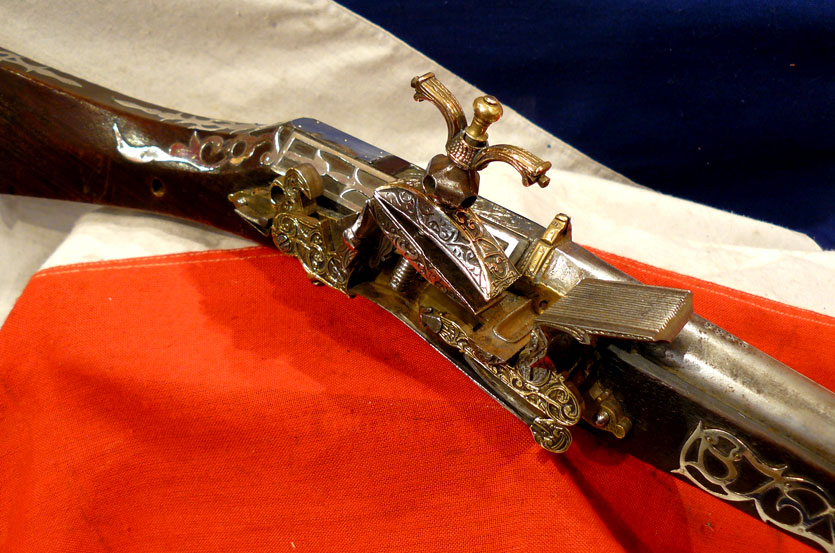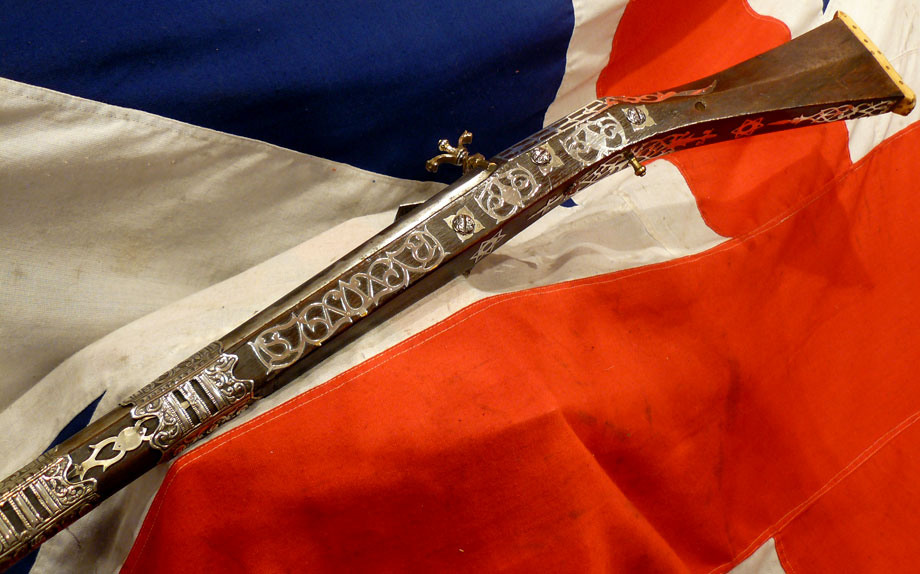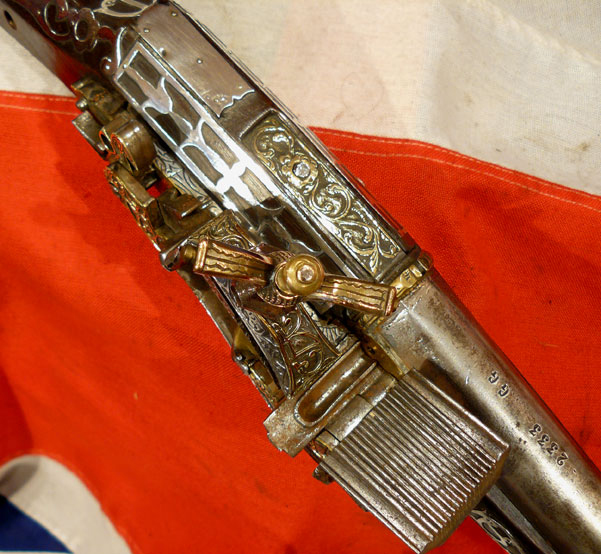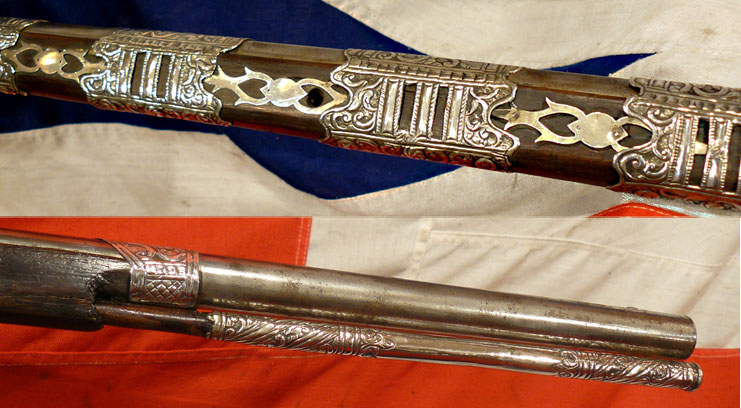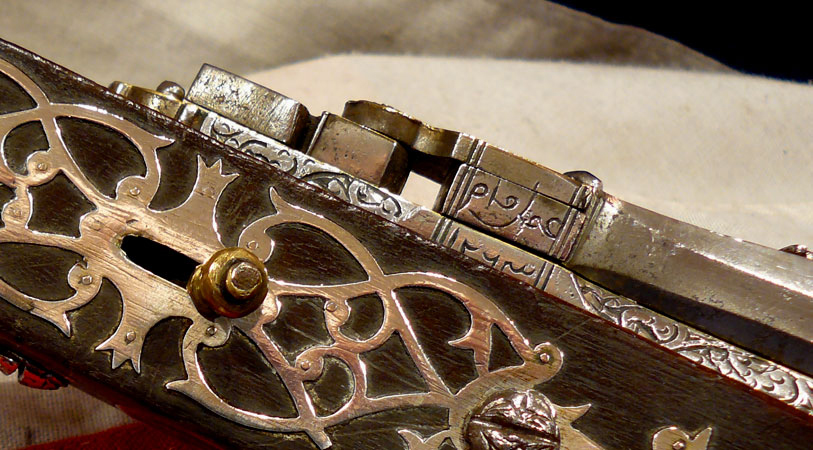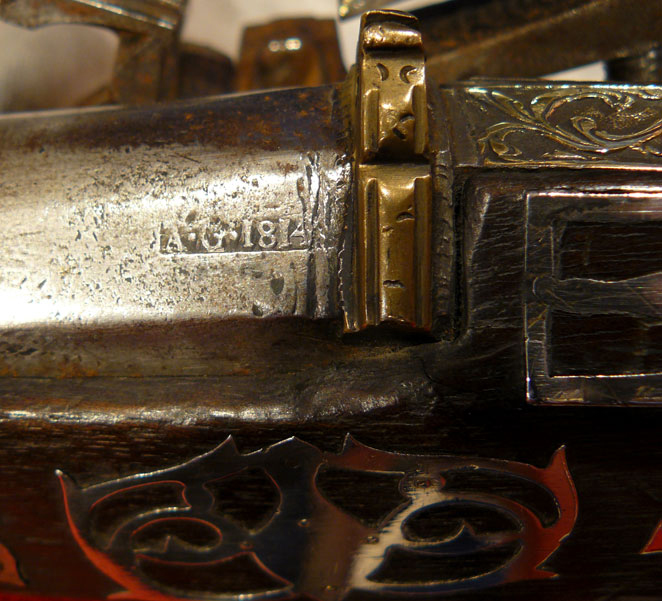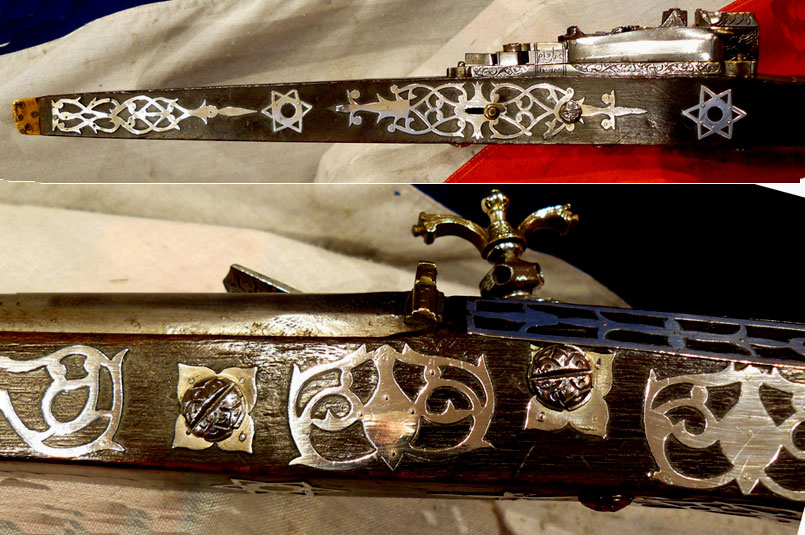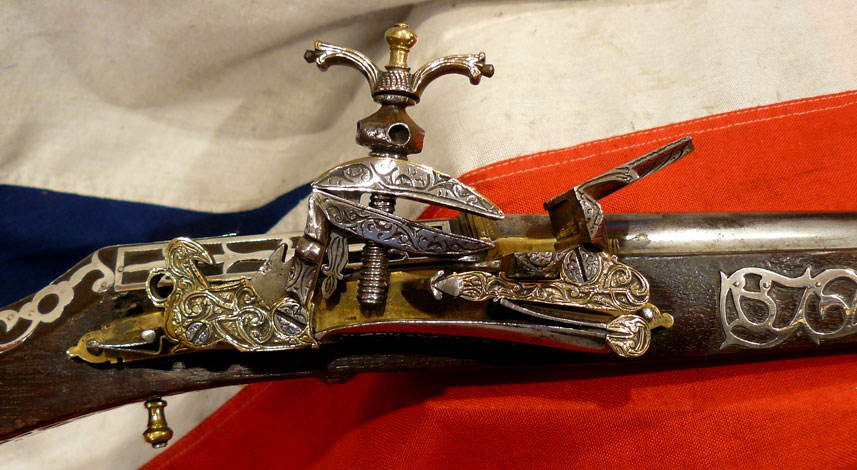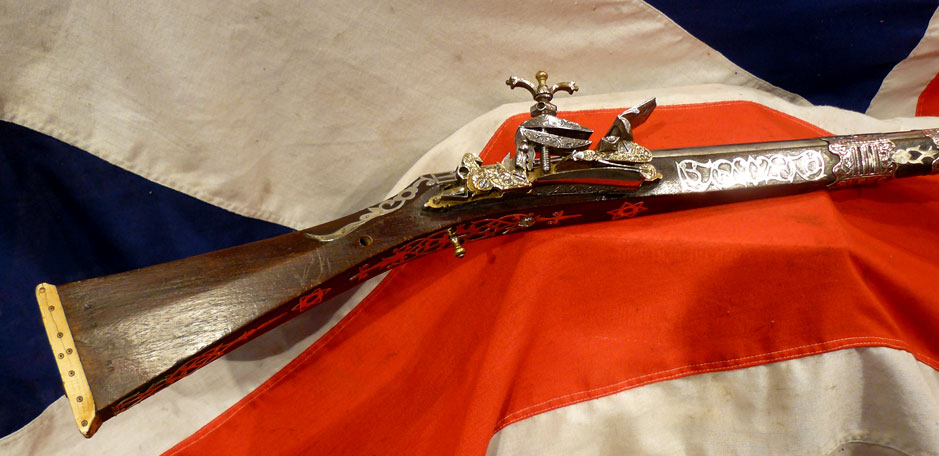A Truly Exceptional, Original, Highest Grade Napoleonic Wars Period Antique Museum Piece, Likely Made For Ali Pasha. An All Silver Mounted Miquelet Long Gun of , Early 19th Century Of Royal Status. Monogrammed & Dated 1814 Barrel & Signed Lock
A singularly spectacular ‘statement piece’ for any collection of rare and fine arms or antiques. From the Napoleonic Wars era, potentially made for Ali Pasha. **See reference and link below to another extremely similar example of Ali Pasha's in the Metropolitan
The great ruler of the Ottoman's, Ali Pasha was at first was an admirer of Napoleon and formed a brief alliance with him during the Napoleonic wars, but, with changing winds he went against his previous ally to support the British. Napoleon thus sanctioned a planned rebellion against Ali, but the British arrived, as funds were being collected and rebels were being recruited. Ali's rival, Ibrahim Pasha of Berat, turned to the French and gathered a coalition of Ali's enemies, including Mustafa Pasha of Delvinë, Pronio Aga of Paramythia, Hasan Çapari of Margariti, the Beys of Himara, the Aga of Konispoli and the Souliotes. This coalition began attacking Ali's realm with support from French artillery, and Ali responded by bribing Ibrahim's supporters with British support. Ali besieged Ibrahim Pasha in Berat with an 8,000-man army commanded by the Albanian captain Omer Bey Vrioni, and with the aid of British rockets, Berat finally fell after a year of skirmishing. Ibrahim retired to Vlorë, and Ali told the Porte that he had taken Berat in response to the revolts in upper Albania that were the result of Ibrahim's inability to rule
In 1809, Lord Byron together with John Cam Hobhouse visited Ali's court in Tepelena and Ioannina in 1809. Byron recorded the encounter in his work Childe Harold. They travelled to Albania to see the country that was, until then, mostly unknown in Britain. Byron presented Albanians as a free people who lived in their state under their leader, Ali Pasha, described by Byron as a "man of first abilities who governs the whole of Albania"
A near identical long gun is in the Metropolitan museum, the Miquelet Rifle of Ali Pasha
His rule by Ali's definition, included central and southern Albania, and parts of mainland Greece; in particular, most of the district of Epirus and the western parts of Thessaly and Macedonia. He managed to stretch his control over the sanjaks of Yanina, Delvina, Vlora and Berat, Elbasan, Ohrid and Monastir, Görice, and Tirhala. Ali was granted the Sanjak of Tirhala in 1787, and he delegated its government in 1788 to his second-born Veli Pasha, who also became Pasha of the Morea Eyalet in 1807. Ali's eldest son, Muhtar Pasha, was granted the Sanjak of Karli-Eli and the Sanjak of Eğriboz in 1792, stretching for the first time Ali's control down to Livadia and the Gulf of Corinth, except Attica. Muhtar Pasha also became governor of the Sanjak of Ohrid in 1796–7 and of the Sanjak of Vlora and Berat in 1810.
Similar finest examples may be viewed in the Topkapi Museum in Istanbul and the Hermitage in Russia. A most similar gun was presented to President Thomas Jefferson by the Bey of Tunis. A simply superbly beautiful antique Long gun from the Early 19th century. A miquelet gun with a very high quality miquelet toe lock decorated with chiseled and fretted silver panels and inlaid foliate arabesques.
The gun is richly inlaid with silver throughout and fitted with a bone butt plate, with matching silver barrel bands, and the original silver mounted ramrod. Figured hardwood three-quarter stock profusely inlaid over its full length with numerous silver plaques.
A most similar gun was a gift of the Russian Romanov Tsar to Augustus II King of Poland and Elector of Saxony on his coronation in Krakow. That gun is published in the book Prunkwaffen: Waffen und Rustungen aus dem Historischen Museum Dresden by Johannes Schobel (Leipzig, 1973) p.249, pl. 178.
Guns of this style were popular throughout the whole of Central, Eastern Europe, Russia, the Caucasus and The Ottoman Empire. However this is a much higher quality example than is more often seen, and certainly sets it well apart from the usual musket of it's type.
The barrel has a monogrammed armourer's mark and date A.G. 1814. Signed lock, under the lock plate on the spring.
After the conquest of Istanbul by Mehmed the Conqueror at 1453, construction of the Topkapi Palace was started at the year 1460 and completed at 1478 .The Palace was built upon an Eastern Roman Acropolis located at the Istanbul Peninsula between Sea of Marmara, Bosphorus and the Golden Horn. Topkapi Palace, was the administrative, educational and art center of the Empire for nearly four hundred years since Mehmed the Conqueror until Sultan Abdulmecid who is the thirty-first Sultan. Although Palace was abandoned by the Ottoman Dynasty by moving to the Dolmabahce Palace at middle 19th century, the Topkapi Palace latterly became a world class museum containing some of the worlds finest antique arms and armour.
The year of Catherine II’s acquisition of the Gotzkowsky collection is the Hermitage museum’s birth date. In 1764 Empress Catherine II acquired the collection formed by Johann Gotzkowski for King Frederick II of Prussia. A rich Berlin merchant and founder of silk and porcelain factories in Berlin, Johann Gotzkowski was one of Frederick's agents, in charge of the purchase of works of art for the royal collection. Frederick II (the Great), owner of a wonderful collection of contemporary French paintings, ordered Gotzkowski to purchase paintings by old masters. The merchant was a zealous agent and it took him only a few years to put together a large collection, but by this time Frederick had lost large sums of money in the Seven Years War and he refused to make the purchase.
The enterprising merchant was forced to look around for alternative buyers and he offered the collection to Russia. Catherine II was pleased to take the opportunity of hurting Frederick's self-esteem and of proving that the Russian State Treasury, despite losses which were no less than those of Prussia, could still afford to make such an expensive acquisition. From this purchase onwards the Hermitage has become one of the foremost museums in the world, alongside the British Museum, The Metropolitan, The Louvre and The Prado.
55.5 inches long overall.
As with all our antique guns no license is required as they are all unrestricted antique collectables.
For reference, the rifle of Ali Pasha
https://www.metmuseum.org/art/collection/search/28998
Every single item from The Lanes Armoury is accompanied by our unique Certificate of Authenticity. Part of our continued dedication to maintain the standards forged by us over the past 100 years of our family’s trading, as Britain’s oldest established, and favourite, armoury and gallery
Code: 20889
9995.00 GBP


